Pick up any map of the Middle East over in the past 100 years and it's unlikely to really tell you the story of its people or its geography. It tells the story of two diplomats, Briton Sir Mark Sykes and Frenchman Georges Picot.
Historians and analysts have debated for decades whether the secret UK and French plan to divide up the Ottoman Empire's last Middle Eastern possessions between them almost a century ago, is actually the cause of all the region's current woes.
At a Downing Street meeting in December 1915, Sykes is said to have held up a map and declared: "I should like to draw a line from the 'e' in Acre [now northern Israel] to the last 'k' in Kirkuk [now eastern Iraq]."
The border between the French and British "zones" became the borders between Iraq, Syria, and Jordan.
Whether Sykes-Picot is entirely to blame for the modern day Middle East crisis, it is impossible to deny the carve-up is the cause of intense grievance. Osama Bin Laden referenced it in 2001 as he claimed responsibility for 9/11.
"What America is tasting now is only a copy of what we have tasted. Our Islamic nation has been tasting the same for more than 80 years, of humiliation and disgrace, its sons killed and their blood spilled, its sanctities desecrated," Bin Laden said. He repeated the reference to the time period since Sykes-Picot again later in the broadcast, saying "the sword fell upon America after 80 years."
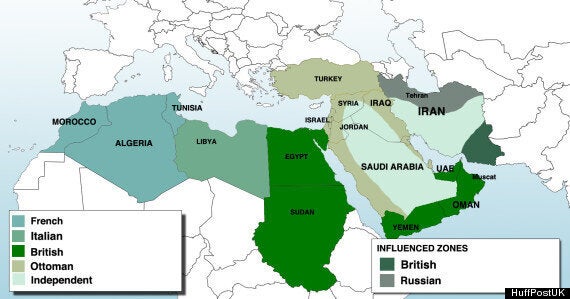
This is what the Middle East looked like in 1914 (with modern borders left in bold) - when Europe controlled huge swathes
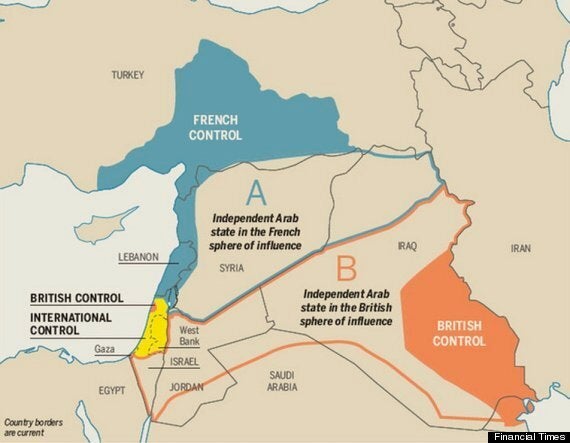
This is the Sykes-Picot plan that split the region between Britain and France, with catastrophic consequences
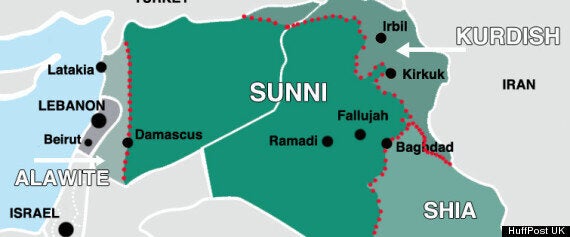
How Iraq and Syria could look with a new Sunni caliphate
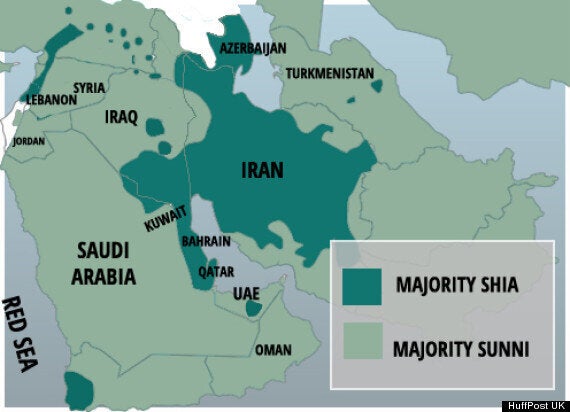
The Sunni-Shia divide across the Middle East
As Al Qaeda's influence has substantially waned, the radical Islamic State of Iraq and the Levant (ISIS) have now achieved what Bin Laden could not, erasing the borders drawn by the diplomats. On June 10, ISIS posted a photograph of their fighters literally bulldozing the dividing bulwark between Syria and Iraq, with the caption "smashing the Sykes-Picot border".
But is the new Caliphate that ISIS has declared across Syria and Iraq actually a more viable state that what currently exists?
"From an ethnographic point of view, it does make some sense," says James Barr, author of 'A Line in the Sand: Britain, France and the Struggle That Shaped the Middle East'.
"They are mostly Sunni. [Syrian President] Assad's father had tried hard to buy them off, they were always seen as a security threat, and he then tried to unite minorities like the Christians against the Sunni majority. Again, in Iraq, though Sunnis aren't the majority, they are the country folk. [Current Iraqi president] Maliki's support comes from Shias, who mostly live in the cities. It's a classic North-South divide."
"Iraq is a manufactured country, it was the Ottoman provinces which were broadly based on Basra, Baghdad and Mosul, but the boundaries were mostly decided by the British and the France based on strategic reasons and oil," he continued.
"Isis has carried on where Bin Laden left off, in a way. And they have actually taken practical actions on the ground, there's that now very famous picture of them re-making the border between the two countries.
"The border really is just a line on the map, designed in London. In a few places it reflects geography, but it just a diagonal line. When I was last in the region in 2009, there were Iraqis in Syria, now there are many Syrians in Iraq."

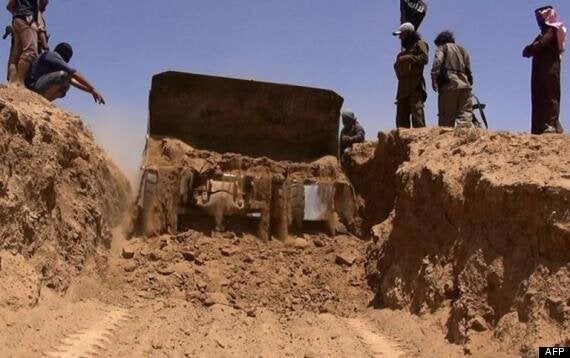
An image from jihadist Twitter shows ISIS militants as a bulldozer cuts a road through the Syrian-Iraqi border
London School of Economics’ Professor Toby Dodge said he found it surprising that Western diplomats might be prepared to accept the division of Iraq, and claimed it was the sectarianism encouraged by Shia Iraqi prime minister Nouri al-Maliki that was more at fault for the current crisis.
"This radical attempt at political engineering has found sympathy among policy pundits in Europe and the United States who are looking for instant solutions to the long-term problems that are destabilising the countries of the region," he wrote in a blog post.
"Iraq and Syria, they argue, are prefabricated states that have never gained the loyalty of their populations. Popular political legitimacy will only be found in smaller, more religiously and ethnically homogenous units that mirror the provinces used by the Ottoman Empire to administer the region before 1914.
"This assertion, made by both Isis and western commentators, is historically and sociologically illiterate... It is the failure to build a sustainable and inclusive political system after regime change in 2003 and the authoritarianism of Maliki, America's candidate for prime minister, that explains the rise of Isis and current crisis, not the state's supposedly 'false' creation."
The real question is that if you declare a state, but no one recognises it, does it exist? It may be a long time before globes are remade and the Islamic State takes a seat at the UN, but as Barr points out, "stranger things have happened".
"I'd be surprised if this was long-lasting. ISIS obviously does have some local support, or they wouldn't have taken over such large chunks of Iraq. I can certainly see it being the case the eastern Syria and northwestern Iraq being a no-go area for Westerners and a place where central government just doesn't run.
"It will all change depending on if people see they can actual run a country. Hezbollah have done that in Lebanon, providing local services to people. If ISIS can do that well, and that needs money, they're in business."
This 2007 map from the cover of the Atlantic seems oddly prescient, if more and more grounds continue to emerge, bent on breaking the Middle East's rocks in to smaller and smaller chunks.